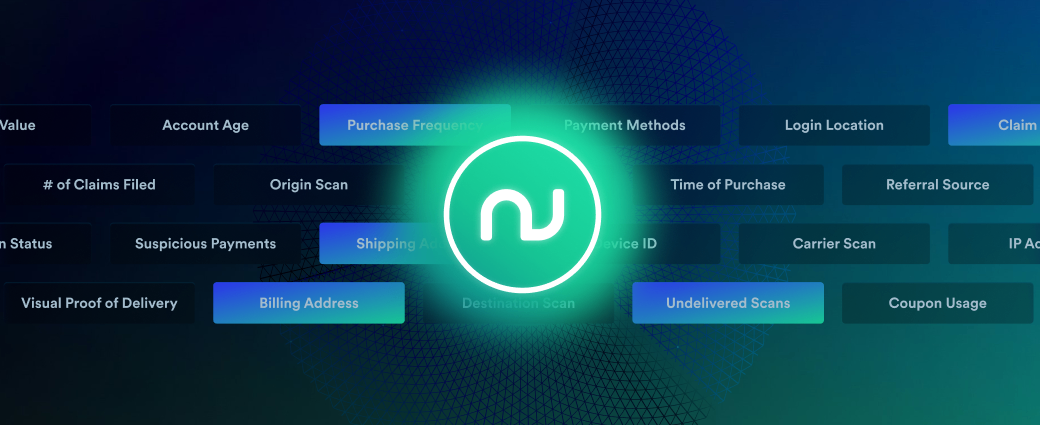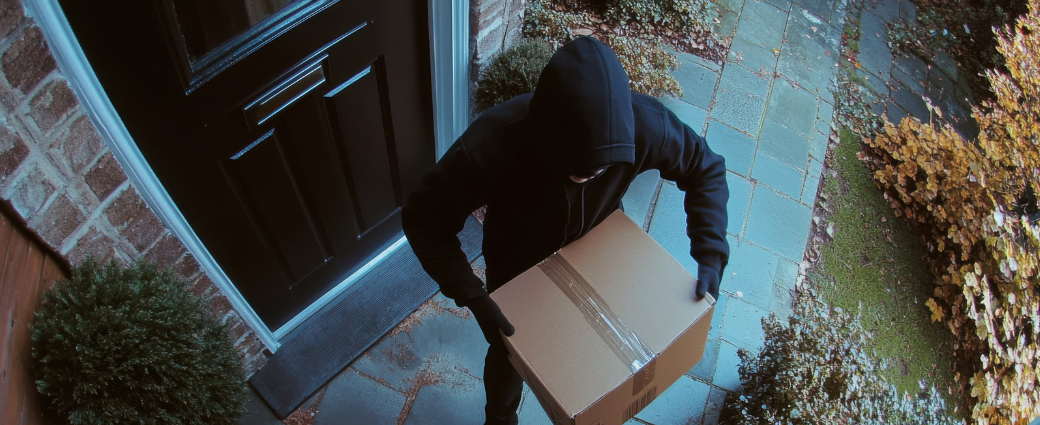
AI-powered delivery date estimates to boost conversion
Give shoppers peace of mind and protect and grow your bottom line
Personalized tracking experiences to build brand loyalty
Returns and exchanges management to mitigate fraud and reward best customers
Proactive communication to drive customer lifetime value
Delivery claim management to tackle fraud and build trust
Key Hits and Misses in Retail Technology
%20(6).webp)
Over the last decade, customers have been showered with promises of technology that would make shopping easier or more enjoyable. Smart mirrors, virtual reality apps, delivery drones— technology to permeate every touchpoint in retail.
On some fronts, that promise has come to fruition. Mobile phone tap payments are more popular than credit cards in many stores. Digital receipts are the new normal. Yet consumers have been less enthusiastic to adopt other trends—smart mirrors haven’t replaced dressing rooms, and digital storefronts in quaint neighborhoods were a temporary amusement that failed to gain traction.
To assess how technology is altering the retail landscape and how brands can capitalize on those changes in the future, let’s look at the retail tech trends that are hot, simmering, and ice-cold.
Retail tech that’s red-hot
The biggest retail tech success stories range between concepts that seem like science fiction to nearly ubiquitous options powered by mobile phones.
Augmented Reality (AR)
The most exciting development in retail technology has been the adoption of AR. Beauty brands like Sephora have been exploring this type of technology for years, but pandemic-related restrictions drove consumer trust in virtual sampling over the last two years.
While retailers have been using AR to sway shoppers to try on and purchase products through their proprietary apps, Pinterest Try On and Snapchat Shopping Lenses are leading the way in empowering shoppers to try on makeup, eyewear, jewelry, and even clothing through social media.
Pinterest is expanding its AR feature to encompass home furnishings and decor, following in the footsteps of Houzz who has seen great success with their early investment in this tech. According to Snapchat, platform users are now engaging with AR more than 6 billion times per day, and 93% of them are interested in using AR for shopping.
Luxury brands, often slow to embrace tech trends, see the promise in meeting shoppers on social platforms where they’re already spending considerable time. Vogue Business reports that Farfetch, Prada and Piaget are among the early adopters of the new Snapchat Shopping Lenses.
Autonomous Vehicles
The days of receiving orders from your friendly neighborhood drone or robot aren’t here yet, but they’re close. Amazon Prime Air, Alphabet Wing, and UPS Flight Forward have all received FAA approval to operate delivery drones, and are working with regulators to deploy delivery drones in the U.S. and abroad.
After initial pushback, robots like FedEx Roxo, Amazon Scout, and Starship have received approval to operate on sidewalks in Pennsylvania, Virginia, Idaho, Florida and Wisconsin, and have become a popular way to deliver food on college campuses.
Drones and robots are restricted to what is known as “last mile” delivery—the final leg between the warehouse and the customer’s home—but long-haul trucking is also rolling into autonomous delivery.
Einride, a Swedish company pioneering electric and self-driving trucks, expanded operations from Europe to the U.S. in 2021. The timing couldn’t be better, as American supply chains continue to feel the strain of driver shortages and Covid-related absences.
Mobile Access to Receipts, SKUs, and Wayfinding
Thanks to widespread adoption of smartphones, mobilizing everything from payments to digital returns has become an everyday occurrence for most people.
Smartphones have made returns easier, both at brick-and-mortar stores and in ecommerce. For in-person purchases and returns, many retailers now offer customers the option of an email receipt, eliminating the need to search for paper receipts if a return is necessary.
Mobile phones have created a boom in retailer-specific apps. Retailers like Target, Lowe’s, and Zara reward their app users with instant access to their purchase history—including return codes—for a seamless experience. These apps can also serve as a wayfinder in the store, directing shoppers to an item’s specific location.
A growing number of retailers are leaning into smartphone usage to offer digital returns, encouraging shoppers to return their items—without a box or label—at centralized collection points by presenting a return agent with a return code or QR code to identify the transaction.
Even traditional cash transactions—like purchases at farmer’s markets and peer-to-peer sales through classified ads on Facebook Marketplace and Craigslist—have been overhauled by QR codes and tap-to-pay options like Apple Pay and Venmo, allowing people to leave their wallets at home and facilitating contactless commerce.
Retail tech that’s starting to simmer
Transformative technology can take years to become part of the mainstream economy. The retail tech trends we see bubbling right now are all concepts that are functional today, but require widespread adoption to become gamechangers.
Virtual Reality and Digital Goods
Hollywood has long dabbled in stories about people leading alternate lives in a virtual universe. That virtual world, the metaverse, is morphing into part of retail, even though much of the current flurry of activity is taking place in more traditional 2D spaces rather than proper VR environments. Companies like Meta (f.k.a. Facebook, whose name change triggered this hype cycle), Roblox, and Decentraland are catalyzing the metaverse, creating immersive, potentially shoppable environments online for both work and play.
Brands are beginning to recognize the potential for creating virtual goods that consumers can purchase with real money. In 2021, Nike acquired RTFKT, a company that creates unique products and experiences for game engines, non-fungible tokens (NFTs), blockchain authentication, and augmented reality, signaling its confidence in the virtual marketplace.
The traditional avatar customizations and enhancements that have long been a hallmark of “sticky” games have been completely upleveled. Consumer brands have been flocking to Roblox, with companies like Ralph Lauren, Gucci, and Forever 21 creating virtual apparel and accessories for avatars in the platform. A $1000+ pair of Gucci sneakers might cost less than $13 as a virtual option in Roblox, but limited edition items can resell for more than their real-world counterparts. In June 2021, a virtual Gucci Dionysus Bag was resold for over $4,100 worth of Robux (Roblox’s in-game currency) — surpassing the price of a real Gucci Dionysus bag.
Voice Assistants
About 35% of Americans own a smart speaker, but less than 14% of those owners were projected to use it to make a purchase in 2021. Shopping is a largely visual experience for many people, and brands haven’t figured out how to engage customers in voice shopping yet.
The promising news for retailers is that consumers continue to buy and use smart speakers for daily tasks, so there is potential for brands to explore new ways to reach customers. In the near future, that could include using voice assistants to compile shopping lists and place orders on a weekly basis, or make it easier to replenish common consumables.
We’ve long believed that the “assistant” part of voice tech is the key to unlocking how consumers will utilize smart speakers as the technology matures, rather than being a transactional channel. For example, your Google Home could remind you a week before the return window expires for a purchase, or send the return QR code and directions to the closest drop-off location.
Chatbots
Retailers and customers alike have conflicted relationships with chatbots. Chatbots can be useful for directing customers to information like store hours and locations or searching for an order status. They can also create a frustrating feedback loop for a customer who doesn’t use the precise language that the chatbot is programmed to respond to.
Chatbots are becoming more sophisticated—and brands are getting better at programming them—but this is a technology that needs more time for refinement. For retailers looking to create more effective workflows for their customer service teams, a chatbot is best viewed as a solution for simple questions and gathering information before escalating an issue to a human respondent.
RFID Tags
Radio Frequency Identification (RFID) tags were supposed to modernize inventory management, yet the high price of the technology has left them out of reach for many retailers for decades.
As the price per RFID unit falls—it’s currently around 10 cents per tag— brands are beginning to embrace RFID to maintain accurate inventory reports, and even authenticate and track items that have been sold. In 2021, fashion label Scotch & Soda was in the process of switching all inventory to RFID to get full visibility of its stock, while Prada announced the same year that it would add RFIDs to all of its products globally. On the authentication side, companies like Vestiaire Collective and eBay are using RFID tags to authenticate luxury goods in the resale market.
Widespread RFID adoption is coming quickly. The global RFID market is expected to grow from about $10.7 billion in 2021 to $17.4 billion by 2026, and Ailen Li, an RFID expert, told Vogue Business that about 70 percent of retailers are interested in implementing RFID by the end of 2022.
Retail tech that’s ice-cold
Sometimes consumers don’t connect with ideas, even when the technology seems promising.
Magic mirrors, for example, were supposed to replace dressing rooms, eliminating the need for customers to wiggle out of their clothes to see how a garment would fit. The mirrors, however, were expensive, and customers ultimately preferred bracketing their purchases at home to testing the virtual waters of in-store smart mirrors.
Another retail tech trend that never took off was digital storefronts that popped up in tech-friendly cities like New York and San Francisco circa 2013. Touchscreen windows let shoppers browse a brand’s inventory, and schedule same-day pickup or delivery. While it presented a slick experience, shoppers didn’t bite, opting to stick with ecommerce on their own devices.
Even in instances in which retail technology doesn’t land in the way its creators intended, it can still be a valuable experiment.
Case in point: The smart mirrors Rebecca Minkoff famously installed in four stores in 2015 were cost-prohibitive from a scaling perspective, but they helped the brand triple apparel sales in those stores.
Stay tuned
Every retailer wants their tech investments to pay off in increased revenue, but even the technology that lacks staying power can create useful data points. As our industry continues to evolve the shopping experience, it’s important to investigate and experiment with potentially transformative new technologies.
























